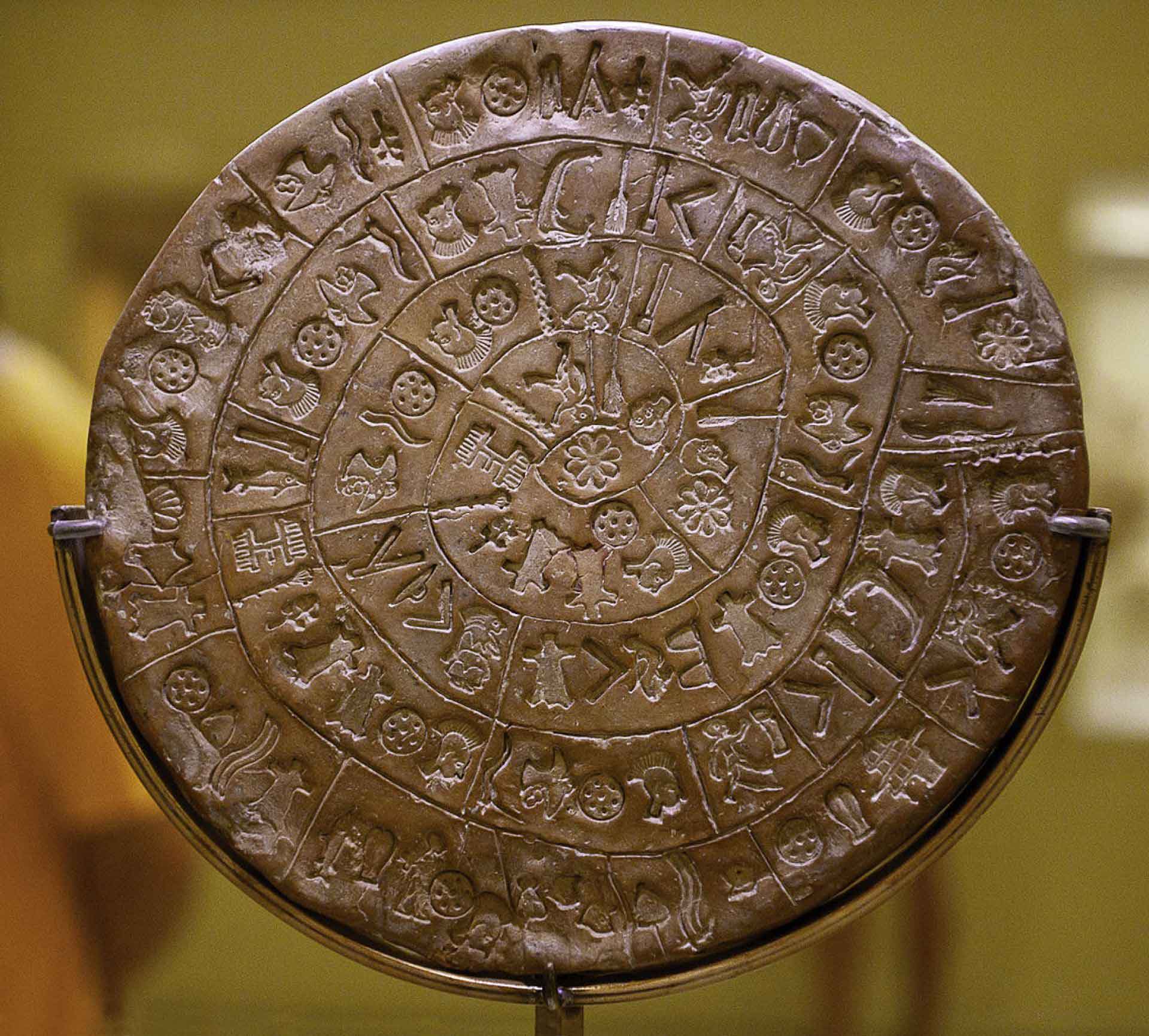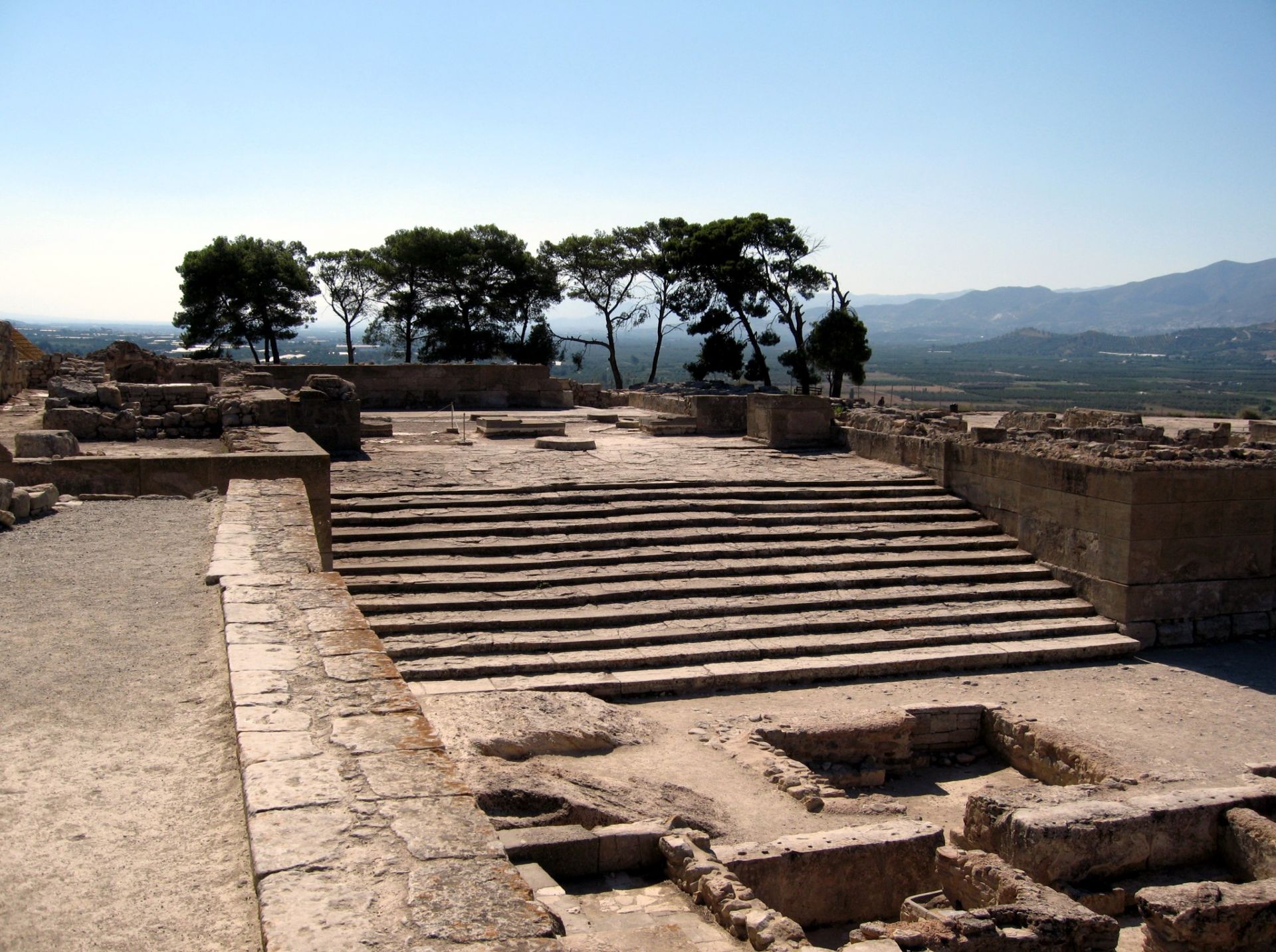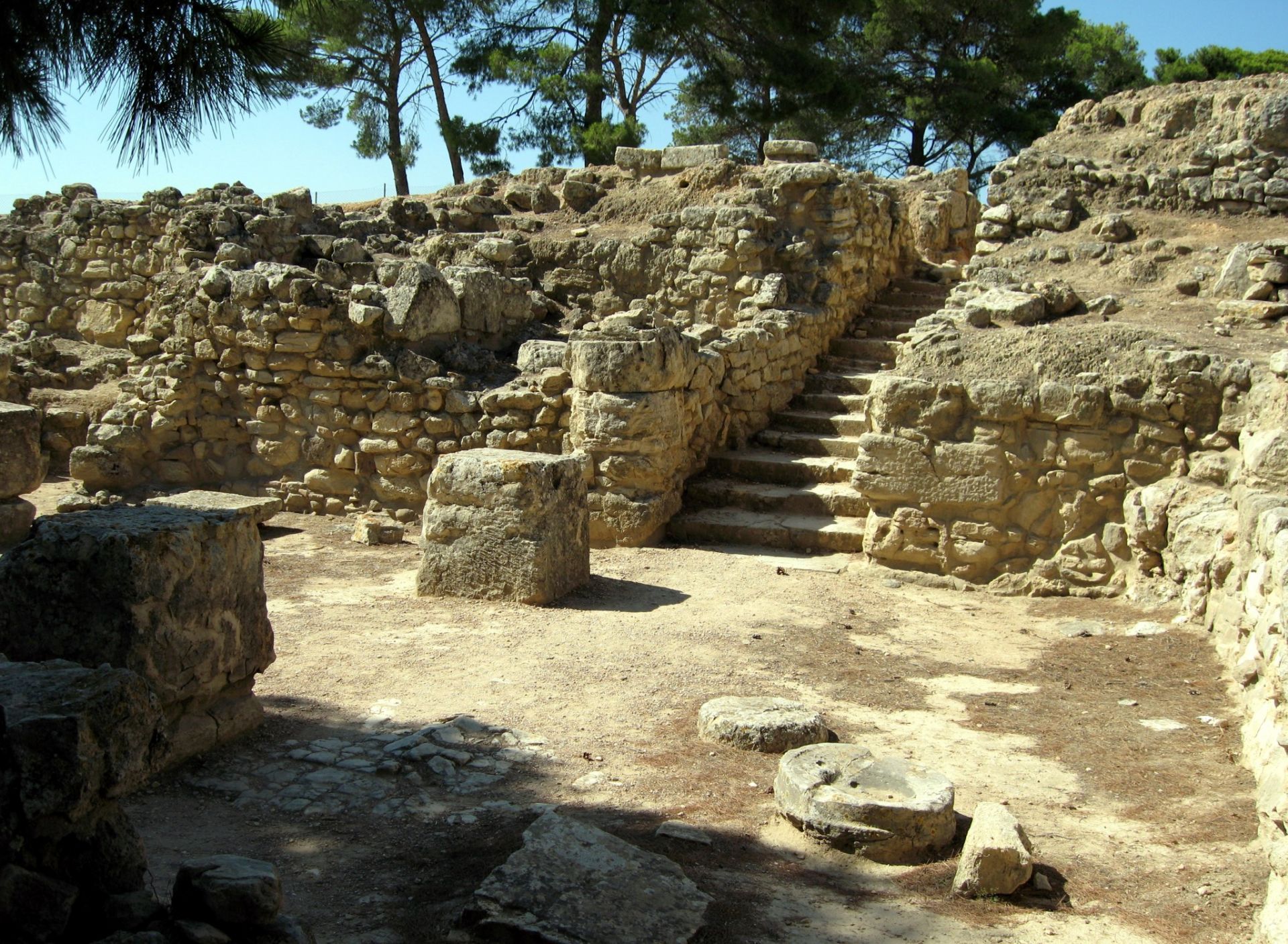Phaistos
In Phaistos, excavations began in 1900, by the Italian Archaeological School and brought to light the second in size, after the Knossos, Minoan palace. According to mythology, Europe bestowed upon Zeus three sons: Minos, Rhadamanthus and Sarpedon, who reigned in Knossos, Phaistos and Malia respectively.
The palace of Phaistos was first built at the beginning of the Old palatial Minoan period (2000-1700 BC).
In the old palatial quarters, many clay pots, colorful pottery or pottery, of unique manufacturing perfection and elegance have survived. Many cups “eggs shell ware” style, craters and fruit stands.
In the north wing of the palace warehouses, had been built at the beginning of the Minoan era and they had been used until the final catastrophe of the palace. There the disk of Phaistos was found. The disk of Phaistos was made of clay. The most extensive text of Cretan hieroglyphic writing has been depicted the disk, using mobile elements. The Disk is also known as the oldest typographic monument of mankind.
Cretan hieroglyphic writing as well as Linear A script, both Minoan scriptures, remain silent and to this day their decryption has not been achieved.
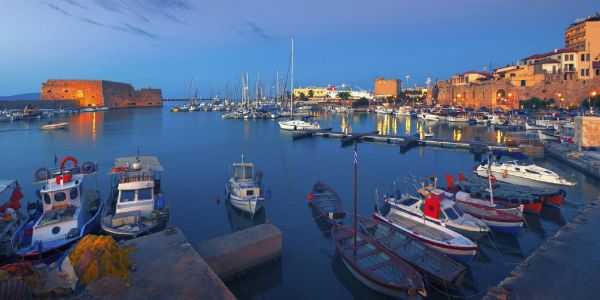
Heraklion
The city of Heraklion is the largest city in Crete and the fourth largest city in the country. Built on the northern coast of the island overlooking the Cretan Sea, it seems to be protected by the old Venetian walls, the most important monument le...
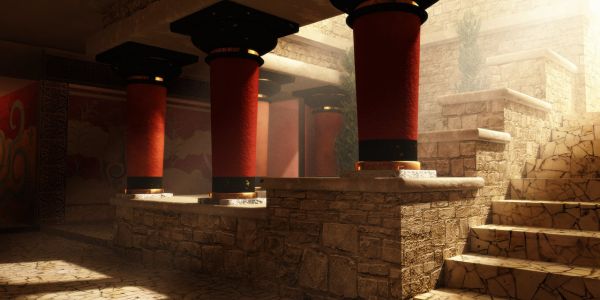
Knossos
In 1878, Minos Kalokerinos, a citizen of Heraklion, began excavation on Kefala hill, about 5 km south of Heraklion. Four rooms were excavated and rushed out of ruins many clay jars. Later, the English Sir Arthur Evans bought the hill from the Turk...

